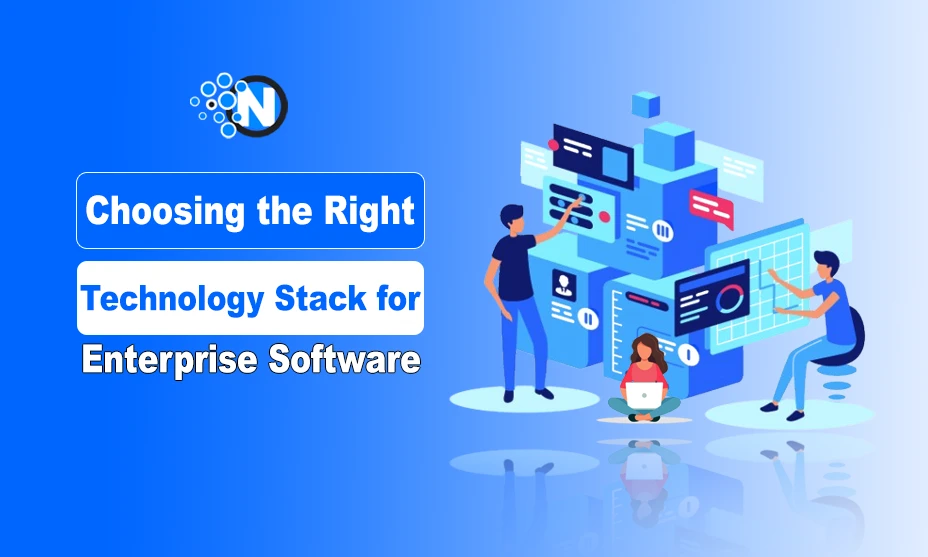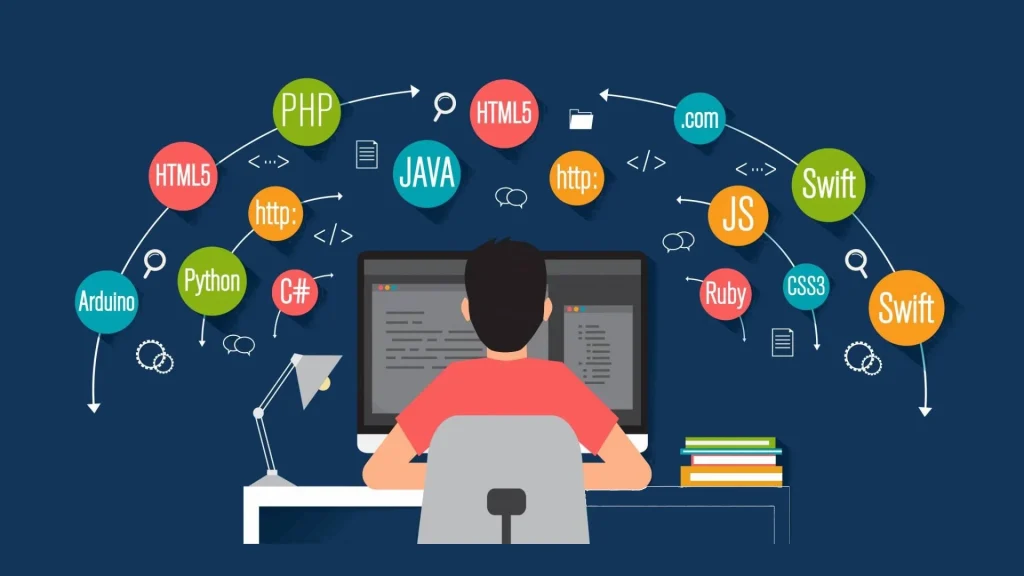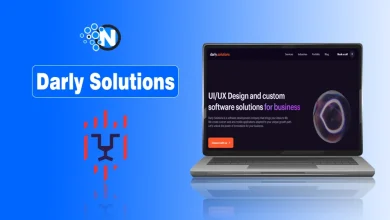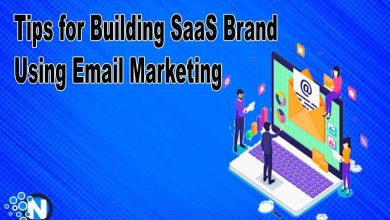How to Choose the Right Technology Stack for Your Enterprise Software

Choosing the right technology stack is one of the most vital decisions for enterprise software development. A well-selected stack lays the foundation for scalability, performance, and maintainability, while a poorly chosen one can lead to costly rework and operational challenges.
This is the reason, you should choose the right stack for your enterprise software development needs.
In this comprehensive guide, I will look at the factors enterprises should consider when selecting a technology stack, along with best practices to ensure alignment with business goals.
Let’s begin here!
What is a Technology Stack?
A technology stack is the combination of programming languages, frameworks, libraries, tools, and platforms used to develop and deploy software.
It typically comprises two primary components:
- Front-End (Client-Side): Technologies that control the user interface and user experience, such as HTML, CSS, JavaScript, and associated frameworks like React, Angular, or Vue.js.
- Back-End (Server-Side): Technologies that manage server operations, database interactions, application logic, and APIs, such as Python, Java, Node.js, Ruby on Rails, and databases like PostgreSQL, MySQL, or MongoDB.
Selecting the right stack involves evaluating how these components work together to support the enterprise software development goals.

Why the Right Technology Stack Matters?
- Performance and scalability: The stack influences how the software handles increasing user demands or data loads.
- Development speed: Familiar and efficient tools enable faster delivery without compromising quality.
- Cost efficiency: Some stacks are open-source and reduce licensing costs, while others may involve recurring expenses.
- Maintenance and longevity: A robust stack ensures the software remains easy to update and adapt to future needs.
- Talent availability: Choosing a popular stack ensures access to skilled developers for ongoing development and support.
Factors to Consider When Choosing a Technology Stack
1. Define business goals and requirements
Every enterprise software project starts with understanding the business goals it aims to achieve. Consider these aspects:
- Target audience: Who will use the software, and what devices or platforms will they use?
- Core features: What functionalities are essential, and which can be added later?
- Time-to-market: How quickly does the software need to be deployed?
- Budget constraints: What is the allocated budget for development and ongoing maintenance?
Having clear goals helps narrow down technology choices that align with the project’s vision.
2. Evaluate scalability needs
Scalability determines whether the software can handle growth in users, data, or features without performance degradation.
- Vertical scalability: Adding resources (e.g., CPU, memory) to improve performance.
- Horizontal scalability: Adding servers to distribute the load efficiently.
For instance, if the software is expected to serve millions of users, technologies like Node.js (known for handling asynchronous processes) or cloud-based solutions like AWS Lambda or Azure Functions may be suitable.
3. Consider technology compatibility
Enterprise software often needs to integrate with existing systems, databases, or APIs. Ensure the stack is compatible with:
- Legacy systems that need to be modernized or extended.
- Third-party tools like CRM, ERP, or payment gateways.
- Cloud services or on-premises infrastructures.
4. Prioritize security
Security should be a top priority for enterprise software. Consider technologies that:
- Offer built-in security features (e.g., .NET for role-based access control).
- Have a strong track record of addressing vulnerabilities promptly.
- Allow implementation of industry standards like SSL encryption, OAuth, and data masking.
5. Assess developer expertise and availability
Opt for a stack with a large developer community and proven success in the market. This ensures:
- Easier hiring of skilled developers.
- Faster troubleshooting with community support and documentation.
- Access to reusable libraries and tools for faster development.
For example, Python and Java have extensive communities and are widely used in enterprise software development.
6. Budget constraints
Evaluate both upfront and long-term costs, including:
- Licensing fees for proprietary tools or platforms.
- Cloud hosting costs if using Infrastructure-as-a-Service (IaaS).
- Development and maintenance costs, including salaries and upskilling.
Open-source stacks like LAMP (Linux, Apache, MySQL, PHP) can be cost-effective for startups and smaller enterprises, while larger organizations might benefit from platforms like Microsoft Azure or IBM Cloud for advanced enterprise needs.
7. Future trends and longevity
Choose technologies that are future-proof and actively maintained.
- Avoid tools that may become obsolete in the next few years.
- Opt for stacks that embrace emerging trends like AI, machine learning, or microservices.
- Monitor the roadmap of key technologies in the stack for upcoming updates and compatibility.
Popular Technology Stacks for Enterprise Software

1. MEAN Stack (MongoDB, Express.js, Angular, Node.js)
- Best suited for web-based applications.
- Offers full-stack JavaScript development for consistency.
- Scalable and ideal for cloud-based deployments.
2. .NET Framework
- Highly secure and versatile for large-scale enterprise applications.
- Offers robust integration with Microsoft products.
- Best for organizations already invested in a Microsoft ecosystem.
3. LAMP Stack (Linux, Apache, MySQL, PHP)
- Open-source and cost-effective.
- Ideal for developing reliable and secure enterprise solutions.
- Suitable for small to medium-sized businesses.
4. Java with Spring Framework
- Popular for enterprise-grade applications.
- Provides excellent scalability and security.
- Ideal for developing RESTful APIs and microservices.
Best Practices for Choosing the Right Technology Stack
1. Involve stakeholders early
Collaborate with all stakeholders, including IT teams, business leaders, and end-users, to gather insights on priorities and expectations.
2. Prototype before committing
Before finalizing the stack, create a proof of concept (PoC) or prototype to test its feasibility. This step helps identify potential challenges early.
3. Embrace modular architectures
Adopting modular or microservices-based architectures allows enterprises to:
- Replace components without affecting the entire system.
- Scale individual services independently.
- Increase development flexibility.
4. Prioritize cross-platform compatibility
If the enterprise software must function across multiple devices or operating systems, ensure the stack supports cross-platform development. Frameworks like Flutter or React Native can be valuable for mobile applications.
5. Leverage cloud-native technologies
Cloud-native solutions offer flexibility and cost-efficiency. Kubernetes, Docker, and serverless architectures help manage deployments at scale while reducing infrastructure overhead.
6. Plan for continuous integration and delivery (CI/CD)
A robust CI/CD pipeline ensures faster development cycles and quicker bug fixes. Tools like Jenkins, GitLab CI/CD, and Azure DevOps streamline this process.
Challenges to Avoid when Selecting a Technology Stack
1. Over-engineering
Selecting overly complex or advanced tools that exceed project needs can increase costs and development time.
2. Ignoring long-term maintenance
Some stacks may offer quick wins but can become difficult to maintain as the software grows.
3. Vendor lock-in
Avoid being overly dependent on a single vendor for tools or services to ensure flexibility and cost control.
Ending Note
Choosing the right technology stack for enterprise software is a strategic decision that impacts performance, scalability, and ROI. By carefully considering factors like business goals, scalability, security, budget, and developer expertise, organizations can build a foundation for long-term success.
Following best practices, such as prototyping, involving stakeholders, and adopting modular architectures, ensures that the chosen stack aligns with both current needs and future growth. With the right technology stack in place and the right technology partners on their side, enterprises can deliver robust, innovative, and scalable solutions that drive business success.




